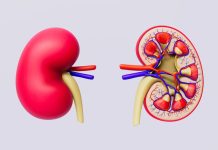
Imagine undergoing surgery and your doctor knowing instantly the type and aggressiveness of a tumor instead of waiting for a week to devise the next steps of the treatment.
A team of Dutch researchers and medical professionals have turned this into reality by employing artificial intelligence (AI) technology during surgeries.
This breakthrough means that neurosurgeons can now understand the nature of a brain tumor quickly – within just 1.5 hours, and adjust their surgical plans right there in the operating room if needed.
Bridging Technology and Surgical Precision
Jeroen de Ridder and his team from UMC Utrecht and colleagues from Princess Máxima Center for pediatric oncology and Amsterdam UMC have developed a deep-learning algorithm, a sophisticated AI technology.
This innovation can identify the type of brain tumor within 20 to 40 minutes by analyzing real-time DNA readings, a drastic improvement from the usual one-week wait.
The DNA reading technology, called Nanopore sequencing, enables DNA to be read and analyzed in real time, which, when paired with their specialized algorithm, can make rapid diagnostics during surgery feasible.
This technique is not just a technological wonder but a beacon of hope for patients and surgeons alike. Every year, 1,400 adults and 150 children in the Netherlands are diagnosed with a tumor in the brain or spinal cord.
Current practices don’t allow surgeons to fully know the type and aggressiveness of the tumor during the surgery.
However, with this new technique, surgeons can instantly adjust their approach based on the immediate findings, potentially increasing the effectiveness of the surgical intervention.
Real-World Implementation and Future Steps
The researchers didn’t just keep this technology confined to the lab. It was put to the test during actual surgeries on children in Utrecht and adults in Amsterdam.
Taking and analyzing tumor tissue samples to determine the tumor type, the entire procedure took between 60 to 90 minutes, which is incredibly fast compared to the traditional method.
Eelco Hoving, a pediatric neurosurgeon at the Máxima Center, highlights a significant benefit of this instant analysis.
Sometimes, a small part of the tumor might be intentionally left behind during surgery to avoid neurological damage.
Suppose it’s later discovered that the tumor is highly aggressive. In that case, a second surgery might be needed to remove the remaining tissue, which further risks and stresses for the patients and their families.
With real-time analysis, surgeons can make well-informed decisions during the initial surgery.
The promising results have led the Princess Máxima Center to integrate this technology into their procedures for some instances.
The Amsterdam UMC also incorporates this technique into their daily practices to expedite diagnosis and enhance surgical strategies.
Despite the optimism and initial implementation, the researchers acknowledge that there’s still a journey ahead. The algorithm must be enhanced to identify more tumor types and meet international standards.
They aim to conduct more research and collaborative studies with other international centers to validate this method’s efficiency and potentially widespread use globally.
This will not only enhance the surgical outcomes but also aim to significantly improve the quality of life for patients in the long run.
In a nutshell, this innovative bridge between technology and medical practice opens new horizons in neurosurgery and cancer treatment, bringing hope and potentially better outcomes for patients grappling with the uncertainty and severity of brain tumors.
If you care about cancer, please read studies about a new method to treat cancer effectively, and this low-dose, four-drug combo may block cancer spread.
For more information about cancer prevention, please see recent studies about nutrient in fish that can be a poison for cancer, and results showing this daily vitamin is critical to cancer prevention.
The research findings can be found in Nature.
Follow us on Twitter for more articles about this topic.
Copyright © 2023 Knowridge Science Report. All rights reserved.



